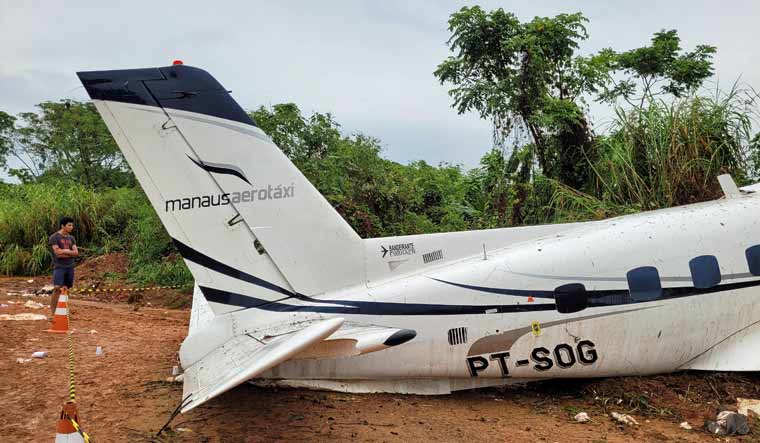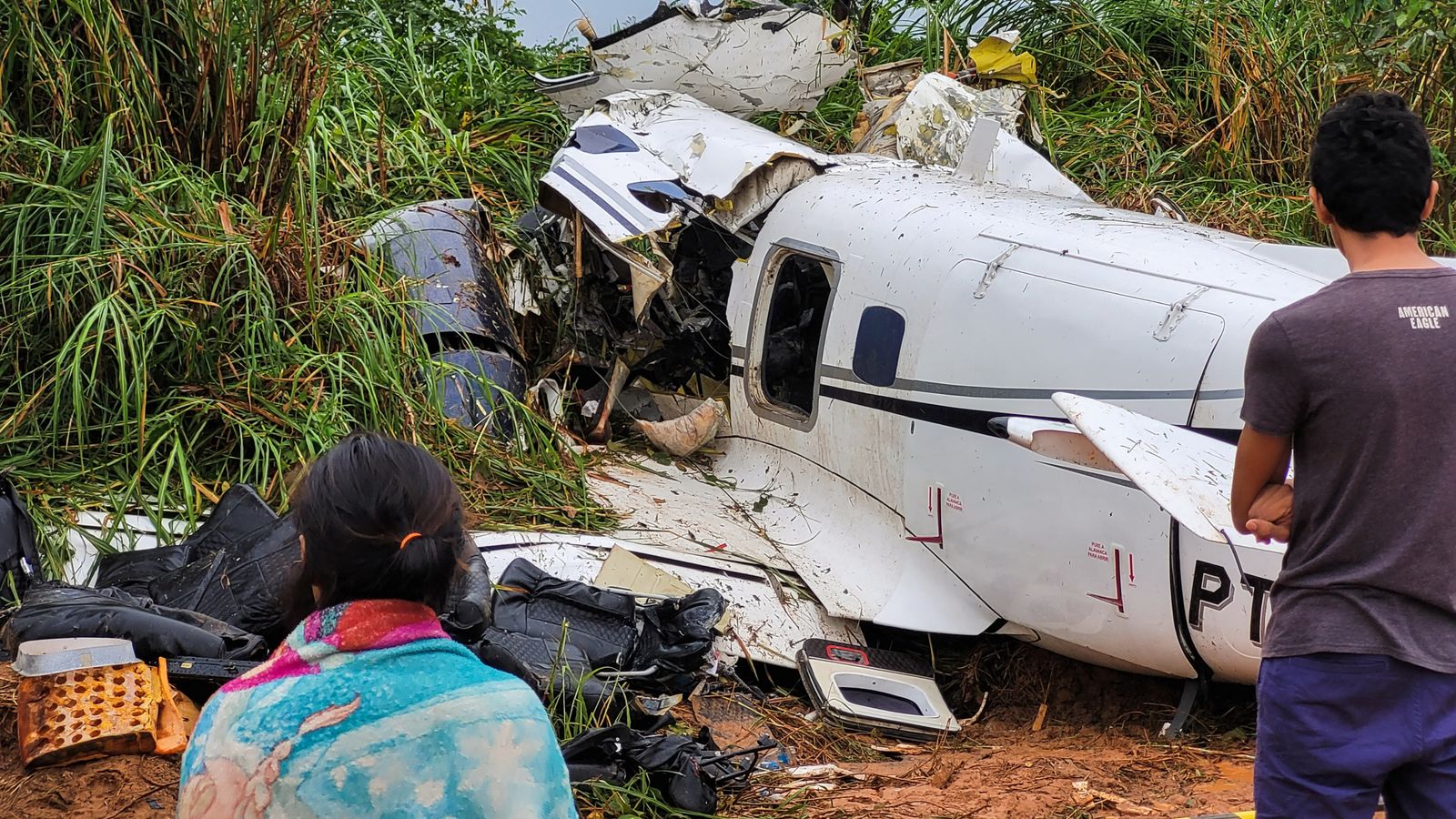Historical Overview of Aviation Accidents in Brazil

Brazil has a long history of aviation, dating back to the early 20th century. Unfortunately, this history is also marked by a number of significant aviation accidents, which have had a profound impact on the country’s aviation safety regulations and public perception.
Significant Aviation Accidents in Brazil
Aviation accidents in Brazil have varied in their causes, ranging from pilot error and mechanical failure to adverse weather conditions and terrorism.
- 1973 Varig Flight 837: This Boeing 707 crashed into the Andes Mountains in Chile, killing all 59 passengers and crew. The accident was attributed to pilot error, as the crew failed to properly navigate the mountainous terrain.
- 1982 Gol Transportes Aéreos Flight 1907: This Boeing 737-800 collided with a Cessna 150 over the Amazon rainforest, killing all 154 passengers and crew. The accident was attributed to pilot error and a lack of communication between air traffic control and the pilots.
- 2006 TAM Airlines Flight 3054: This Airbus A320 crashed into a hangar at São Paulo’s Congonhas Airport, killing all 187 passengers and crew and 12 people on the ground. The accident was attributed to pilot error, as the crew failed to maintain control of the aircraft during a landing attempt in heavy rain.
Impact on Aviation Safety Regulations and Public Perception
These accidents have had a significant impact on Brazilian aviation safety regulations and public perception. In response to the accidents, the Brazilian government has implemented a number of reforms, including stricter pilot training requirements, improved air traffic control systems, and enhanced aircraft maintenance standards. However, despite these efforts, aviation safety remains a concern for many Brazilians.
Comparison with International Standards
The safety record of Brazilian airlines has improved in recent years, but it still lags behind international standards. This is due in part to the fact that Brazil has a large and complex aviation system, with a high volume of air traffic and a diverse range of airlines. Despite the challenges, Brazilian authorities are committed to improving aviation safety and meeting international standards.
Factors Contributing to Flight Crashes in Brazil: Brazil Flight Crash

Brazil flight crash – Brazil, with its vast geographical expanse and bustling aviation industry, has unfortunately witnessed a number of aviation accidents throughout its history. While safety measures have improved over time, understanding the factors contributing to these crashes is crucial for further enhancing aviation safety in the country.
Pilot Error
Pilot error is a significant contributor to aviation accidents globally, and Brazil is no exception. It encompasses a range of factors, including:
- Loss of situational awareness: This can occur due to distractions, fatigue, or inadequate training, leading to misjudgments and incorrect actions.
- Inadequate training and experience: A lack of proper training or insufficient experience can make pilots less equipped to handle challenging situations, such as adverse weather conditions or technical malfunctions.
- Poor decision-making: In critical moments, pilots may make incorrect decisions based on incomplete information or emotional factors, leading to accidents.
Mechanical Failure
Mechanical failures can arise from various sources, including:
- Aircraft maintenance: Inadequate maintenance practices, including improper inspections, repairs, or component replacement, can lead to mechanical failures.
- Manufacturing defects: Faulty components or design flaws in aircraft can contribute to malfunctions, even with proper maintenance.
- Age of aircraft: Older aircraft, particularly those with insufficient maintenance, may be more prone to mechanical failures.
Weather Conditions, Brazil flight crash
Brazil’s diverse climate and topography create challenging weather conditions that can significantly impact aviation safety. These conditions include:
- Turbulence: Sudden changes in air currents can cause aircraft to lose control, particularly during take-off and landing.
- Thunderstorms: Severe thunderstorms with lightning, heavy rain, and strong winds can create hazardous conditions for aircraft.
- Low visibility: Fog, rain, or snow can reduce visibility, making it difficult for pilots to navigate and land safely.
Air Traffic Control Issues
Air traffic control plays a crucial role in maintaining the flow and safety of air traffic. However, challenges in air traffic management can contribute to accidents:
- Communication errors: Miscommunication between pilots and air traffic controllers can lead to misunderstandings and potentially dangerous situations.
- Inadequate infrastructure: Insufficient radar coverage, outdated equipment, or lack of trained personnel can hinder effective air traffic control.
- Overcrowding: High air traffic density can increase the risk of collisions and other incidents.
Infrastructure and Maintenance Practices
The state of aviation infrastructure and maintenance practices plays a vital role in aviation safety. In Brazil, these aspects have faced challenges:
- Runway conditions: Poorly maintained runways, inadequate lighting, or insufficient safety barriers can increase the risk of accidents.
- Airport facilities: Limited airport facilities, such as inadequate fire suppression systems or rescue equipment, can hamper response times in case of accidents.
- Maintenance standards: Varying levels of maintenance standards across different airlines and aircraft operators can impact the overall safety of the fleet.
Safety Regulations and Enforcement
Effective safety regulations and their rigorous enforcement are essential for ensuring aviation safety. Brazil’s safety regulations have evolved over time, but challenges remain:
- Enforcement mechanisms: Limited resources and capacity for enforcing safety regulations can lead to non-compliance by some operators.
- Transparency and accountability: Transparency in investigations and holding accountable those responsible for safety violations is crucial for continuous improvement.
- International cooperation: Collaboration with international organizations and other countries in sharing best practices and implementing safety standards is essential.
Impact and Aftermath of Flight Crashes in Brazil

Flight crashes in Brazil have a devastating impact on families, communities, and the aviation industry. The immediate aftermath is marked by grief, loss, and a scramble to understand what happened. However, the consequences extend far beyond the initial tragedy, leaving long-lasting scars on individuals, communities, and the nation’s aviation landscape.
Impact on Families and Communities
The immediate impact of a flight crash is felt most acutely by the families of the victims. The loss of loved ones is a profound and enduring trauma, leaving behind a void that can never be filled. Communities also experience a collective sense of grief and shock, as the tragedy affects people from all walks of life. The impact on the community extends beyond emotional distress. The loss of individuals can disrupt local economies, particularly in areas where the crash occurred. The aftermath of a crash often leads to a surge in demand for support services, such as counseling, financial assistance, and legal aid.
Role of Government Agencies and Aviation Authorities
Following a flight crash, government agencies and aviation authorities play a crucial role in investigating the cause of the accident, providing support to victims’ families, and implementing measures to prevent future tragedies. The Brazilian National Civil Aviation Agency (ANAC) is responsible for overseeing the country’s aviation industry and conducting investigations into flight crashes. Other agencies, such as the Brazilian Air Force and the National Institute of Criminalistics, may also be involved in the investigation. The primary goal of the investigation is to determine the cause of the crash and identify any contributing factors. This information is then used to improve aviation safety and prevent similar accidents from occurring in the future. The investigation process can be lengthy and complex, often taking several months or even years to complete. The findings of the investigation are made public, allowing for transparency and accountability within the aviation industry.
Impact on Public Trust in Brazilian Aviation
Flight crashes can significantly impact public trust in the aviation industry. In the aftermath of a major crash, the public may become apprehensive about air travel, leading to a decline in passenger numbers and a negative impact on the airline industry. To rebuild confidence, aviation authorities must demonstrate their commitment to safety and transparency. This involves proactively addressing public concerns, communicating effectively with the public, and taking concrete steps to improve safety standards. The implementation of new safety regulations, the introduction of advanced technologies, and the rigorous training of aviation personnel are all essential measures in restoring public trust.
Measures Taken to Rebuild Confidence
In response to the challenges posed by flight crashes, Brazil has taken a number of steps to enhance aviation safety and rebuild public confidence. These measures include:
- Strengthening aviation regulations and safety standards
- Investing in infrastructure and technology to improve air traffic control and communication systems
- Promoting rigorous pilot training and licensing requirements
- Enhancing accident investigation procedures and implementing recommendations to prevent future accidents
- Improving communication and transparency with the public
The tragic Brazilian flight crash has sparked global concern and calls for a thorough investigation into the incident. While the focus remains on the immediate aftermath of the disaster, it is important to note that such events often trigger broader discussions about aviation safety and regulations.
The recent trump press conference today , where aviation safety was a topic of discussion, highlights the need for international collaboration and a commitment to learning from past tragedies to prevent future ones. The investigation into the Brazilian flight crash will undoubtedly contribute to this ongoing global effort to enhance aviation safety standards.
The tragic Brazil flight crash serves as a stark reminder of the fragility of life and the importance of thorough safety protocols in the aviation industry. This event, much like the recent CBS vice presidential debate , underscores the need for meticulous attention to detail and unwavering commitment to the highest standards of performance.
In the wake of such tragedies, a collective effort to learn from past mistakes and implement robust preventative measures is essential to ensure the safety of future air travelers.
